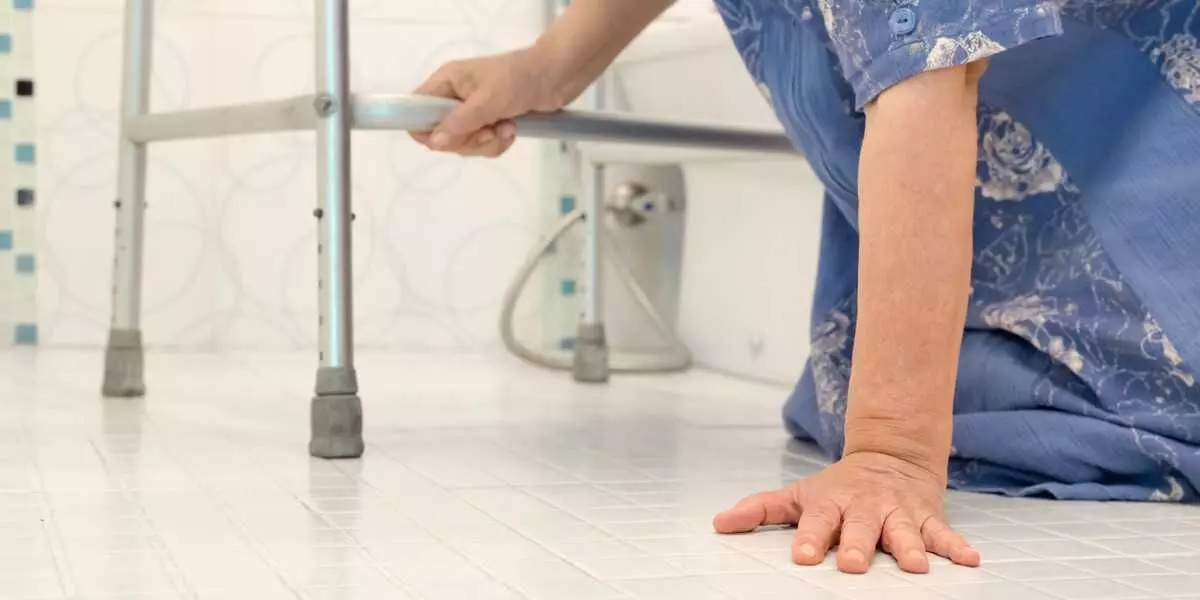Prescription Opioids Linked to Increased Fall Risks among elderly, study finds

In a significant revelation, a recent population-based cohort
study conducted in New South Wales, Australia, has uncovered concerning
associations between prescription opioid analgesics and an elevated risk of
serious falls, particularly among older adults. The
study’s findings suggest that prescription opioids are associated with an
increased risk of serious fall events among adults of all ages, with the
greatest risk observed in individuals aged 85 or older. The
study, designed to explore the age-related risk of serious fall events
associated with opioid use, delves into the nuances of opioid exposure, time
from initiation, and daily dosage.
The study results were published in the journal JAMA Internal
Medicine.
The primary objective of the study was to unravel the intricate
web of associations between prescription opioids and serious fall events.
Researchers aimed to provide a comprehensive perspective by analyzing these
associations across various age groups, shedding light on temporal patterns and
dosage-dependent risks associated with the use of prescription opioids.
Harnessing data that linked national pharmaceutical claims to
diverse datasets encompassing sociodemographic information, clinical
characteristics, medication use, healthcare utilization, and mortality records,
the study included adults aged 18 and older who initiated prescription opioid
treatment between 2005 and 2018.
Revealing Findings:
-
The cohort, consisting of 3,212,369 individuals, witnessed a
total of 506,573 serious fall events, including 5,210 fatal falls. -
Strikingly, the study illuminated that the risk of serious fall
events was heightened across all age groups during exposure to opioids. -
Notably, individuals aged 85 or older faced the highest risk,
with an adjusted incident rate ratio of 6.35 in comparison to those aged 18 to
44.
Temporal analysis revealed a critical period within the first 28
days following opioid initiation, marked by an increased risk of serious falls.
-
This risk, the study found, escalated with age.
- Additionally,
for individuals aged 18 to 84, there was a discernible correlation between
higher daily opioid doses and the occurrence of serious fall events.
The study’s findings prompt a reconsideration of opioid
prescription practices, emphasizing the imperative need for healthcare
providers to carefully weigh the risks and benefits of prescribing opioids,
particularly in older populations.
The critical window of the initial month
following opioid initiation emerged as a pivotal period, urging targeted fall
prevention efforts during this timeframe.
The study advocates for a holistic approach to patient care,
prioritizing safety, especially among vulnerable populations.
As prescription opioids continue to be a mainstay in pain
management, this study addresses a pressing public health concern, urging a
reevaluation of opioid prescription practices and advocating for a proactive
stance on falls prevention in tandem with opioid therapy. The research marks a
significant step toward safeguarding the well-being of patients and fostering a
more nuanced understanding of the risks associated with prescription opioids
across diverse age groups.
Further reading: Age-Related Risk of Serious Fall Events and Opioid Analgesic Use. doi:10.1001/jamainternmed.2023.8154


